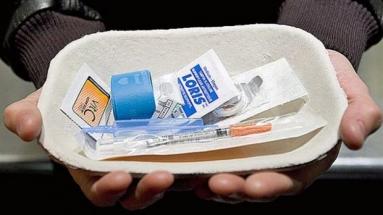'Supervised Injection Facilities': A Controversial Approach to Treating Addiction

Overview
Originally Published: 05/12/2016
Post Date: 05/13/2016
Source Publication: Click here
Similar Articles: See the similar article
by Steve Duff
Summary/Abstract
Supervised injection rooms are legally sanctioned facilities where people who use intravenous drugs can inject pre-obtained drugs under medical supervision. Supervised injection facilities are designed to reduce the health and societal problems associated with injection drug use. These facilities now operate in dozens of cities abroad and in Canada and have been shown to reduce injection-related risks and harms like vein damage, overdose, and transmission of diseases like HIV/AIDS and hepatitis C.
Content
An increasing number of elected officials have thrown their support behind the creation of supervised injection facilities (SIFs) in major U.S. cities. Sometimes referred to as drug consumption rooms (DCRs), SIFs are highly controversial as they provide a sanctioned site where addicted individuals can self-administer controlled substances in a sanitary and supervised environment.
A recent flurry of draft legislation called for the legalization of SIFs in a number of states. California and Maryland have introduced bills, while New York state Assemblymember Linda Rosenthal is currently working with advocates on a SIF bill specific to New York. The legislature in New Mexico had a SIF feasibility study conducted.
“New York, and nearly every other state across the country, is grappling with a heroin and opioid addiction crisis,” said Ms. Rosenthal. “Addiction is a public health crisis and we must address it as such, with aggressive, community-based solutions.”
A testimony hearing was held in California last month concerning the SIF bill (AB-2495) which, if passed, would make it legal for local and state health departments to allow for controlled substance use in clinics that offer medical intervention. “This bill is one step to be able to address the heroin addiction and epidemic of overdoses that we're having in our country,” said sponsor of the bill, Assemblymember Susan Talamantes Eggman.
At the California hearing was Canadian Senator Larry Campbell, who was part of the team who helped open a Vancouver SIF center called ‘Insite', in 2003. The Vancouver SIF is held as an example by advocates of the benefits the centers can have. Since opening, Insite has had no overdose deaths, despite there being around 20 overdoses a week. When an overdose does occur the onsite nurse administers Narcan. There has been over 30 peer review studies of Insite1, results of which have found that public drug use has decreased. A cost-benefit analysis found that the facility prevents an estimated 35 cases of HIV a year.2
Drug-related crime is one of the major concerns those who oppose the centers have, though studies have found that drug-related crimes did not increase in the area surrounding Insite, and that the rate of vehicle robberies decreased.1
“The drug is illegal, but the person who's using that drug is suffering from a recognized medical disease," Mr. Campbell told the Associated Press. "What this [SIF] does is simply treat the addiction, keep somebody alive and keep them off the streets.”
However, the proposed SIFs face stiff opposition. Staten Island borough president James Oddo said, “With one breath we cannot tell children that drug use is bad, and with another breath provide drug-addicted individuals with a government-approved shooting gallery.”
Law enforcement agencies have also spoken out against the California bill, a spokesperson for the State Sheriffs' Association alluded to the matter of legality that SIFs present, as federal law prohibits such facilities, saying, “This sends entirely the wrong message regarding drug use and likely creates civil liability issues.”
Supporters say that an exemption could be made for the centers, similar to the ‘hands-off' approach Washington has taken with marijuana legalization.
When the Canadian prime minister Stephen Harper made an effort to close Insite, the Supreme Court of Canada ruled against the government, mandating that an exemption be issued for the facility and that future exemption applications be considered.
The court wrote that, “The effect of denying the services of Insite to the population it serves and the correlative increase in the risk of death and disease to injection drug users is grossly disproportionate to any benefit that Canada might derive from presenting a uniform stance on the possession of narcotics.”
In total, there are 66 cities with SIFs in 10 countries (Australia, Canada, Denmark, Germany, Greece, Holland, Luxembourg, Norway, Spain, and Switzerland), but none in the U.S. yet. According to the latest data heroin overdoses have tripled in the U.S. since 2010, statistics that highlight the importance of combating the current drug crisis. It is likely we haven't hear the last of SIFs in this debate.
References:
1. Schatz, E., Nougier, M. Drug consumption rooms, Evidence and Practice. International Drug Policy Consortium(2012). https://dl.dropboxusercontent.com/u/64663568/library/IDPC-Briefing-Paper_Drug-consumption-rooms.pdf Accessed on 5/10/16, access on 5/10/16.
2. Andresen, MA., Boyd, N., A cost-benefit and cost-effectiveness analysis of Vancouver's supervised injection facility. International Journal on Drug Policy (2010). http://www.ncbi.nlm.nih.gov/pubmed/19423324, accessed on 5/10/16.





